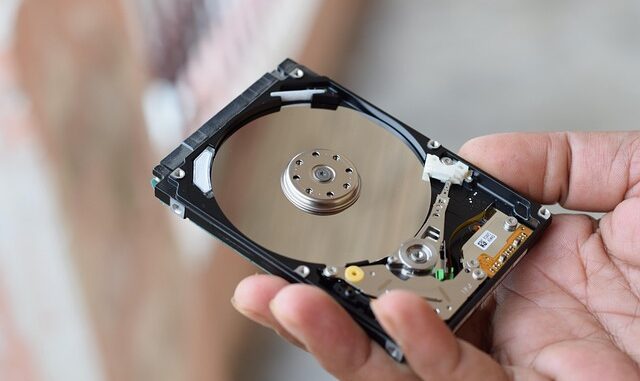
Summary
This article provides a comprehensive guide to backing up data on a Dell computer. It explores various backup methods, including Dell’s own software, Windows Backup, external drives, and cloud storage, offering a step-by-step approach for each. The article emphasizes data security and the importance of multiple backup locations for redundancy.
Protect your data with the self-healing storage solution that technical experts trust.
Main Story
Protecting your valuable data is paramount in today’s digital age. Losing important files due to hardware failures, accidental deletions, or malware attacks can be devastating. This guide provides a comprehensive strategy for backing up your Dell computer, ensuring your data remains safe and recoverable.
Dell Backup and Recovery
Dell provides its own backup and recovery software, offering a user-friendly way to protect your data.
-
Launch the Application: Locate and open the Dell Backup and Recovery software on your computer.
-
Choose Backup Type: Select “Data Backup” to back up specific files or folders, or “System Backup” to create a complete image of your system. A system backup allows you to restore your entire computer to a previous state, including the operating system, applications, and settings. Data backup provides copies of individual files and folders.
-
Select Backup Destination: Choose where you want to save your backup. You can use an external hard drive, a network location, or even cloud storage. An external drive offers fast backup and recovery without internet access and control of the physical storage.
-
Select Files/Folders (for Data Backup): If you’re performing a data backup, specify the files and folders you want to include. Focus on essential documents, photos, videos, and any other irreplaceable data.
-
Schedule Backups: Automate your backups by setting a schedule. This ensures your backups stay consistent and up-to-date. You can choose daily, weekly, or monthly backups depending on how frequently your data changes.
-
Continuous Data Protection: Consider upgrading to Dell Backup and Recovery Premium for continuous data protection. This feature backs up your files in real-time, allowing you to revert to previous versions whenever needed.
Windows Backup
Windows also offers built-in backup functionality, accessible through the Control Panel.
-
Access Backup and Restore: Open the Control Panel and navigate to “Backup and Restore.”
-
Set Up Backup: Choose a backup destination, such as an external hard drive or network location. Remember that physical hard drives or USB sticks risk damage or loss if mishandled and local networks are dependent on the integrity of the hardware on the network.
-
Select Backup Content: Choose which files and folders to include in your backup. Windows provides predefined sets of commonly backed-up data, or you can customize the selection.
-
Schedule Backups: Set a regular backup schedule to automate the process.
External Hard Drives
External hard drives offer a simple and reliable way to back up your data.
-
Connect the Drive: Connect your external hard drive to your Dell computer.
-
Manual Backup: Simply drag and drop the files and folders you want to back up onto the external drive.
-
Windows Backup: Use the Windows Backup utility as described above to schedule automatic backups to the external drive.
Cloud Storage
Cloud services like OneDrive, Google Drive, and Dropbox provide offsite backup and convenient access to your files from any device.
-
Choose a Service: Select a cloud storage provider that suits your needs and budget.
-
Install the Application: Install the cloud service’s desktop application on your Dell computer.
-
Select Folders to Sync: Designate the folders you want to back up to the cloud. The application will automatically sync these folders, ensuring your data is always up-to-date.
Best Practices
-
Multiple Backup Locations: Implement the 3-2-1 rule: have at least three copies of your data, on two different media types, with one copy stored offsite. This approach ensures redundancy and protects against various threats.
-
Regular Verification: Periodically test your backups to ensure they are working correctly and that you can restore your files without any issues.
-
Data Security: Protect your backups with strong passwords, encryption, and two-factor authentication where available. Securely store any physical backup devices to prevent unauthorized access.
-
Monitor Storage Capacity: Keep track of the storage capacity of your backup devices and services. Upgrade your storage as needed to accommodate growing data volumes.
By following these steps and best practices, you can create a robust backup strategy for your Dell computer, ensuring your valuable data remains safe and readily available when you need it most.


So, if I back up everything to the cloud, does that mean I can finally ditch my external drives and use them as fancy paperweights? Or am I missing something crucial about physical backups?